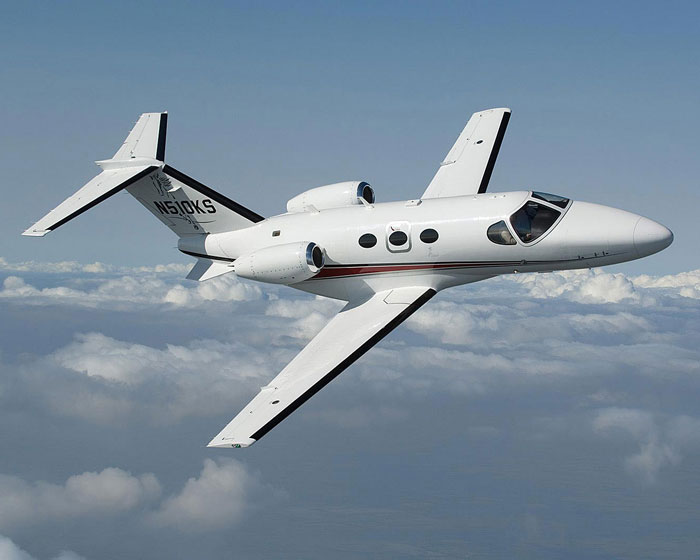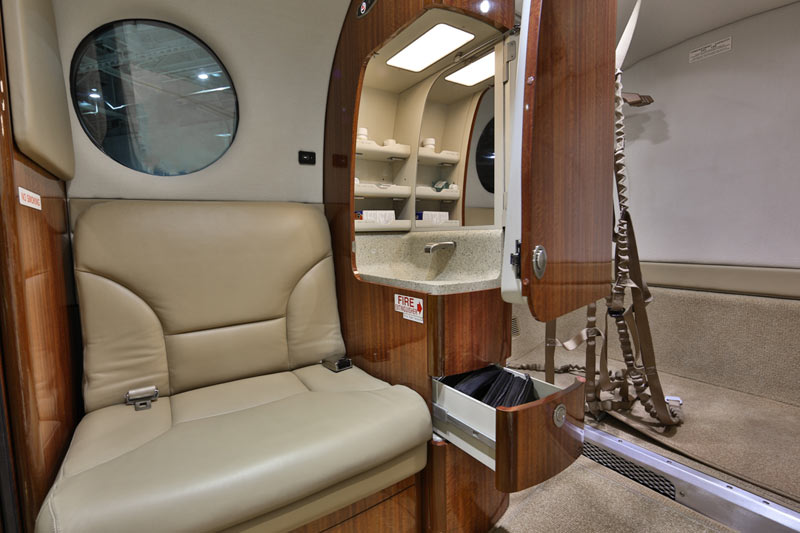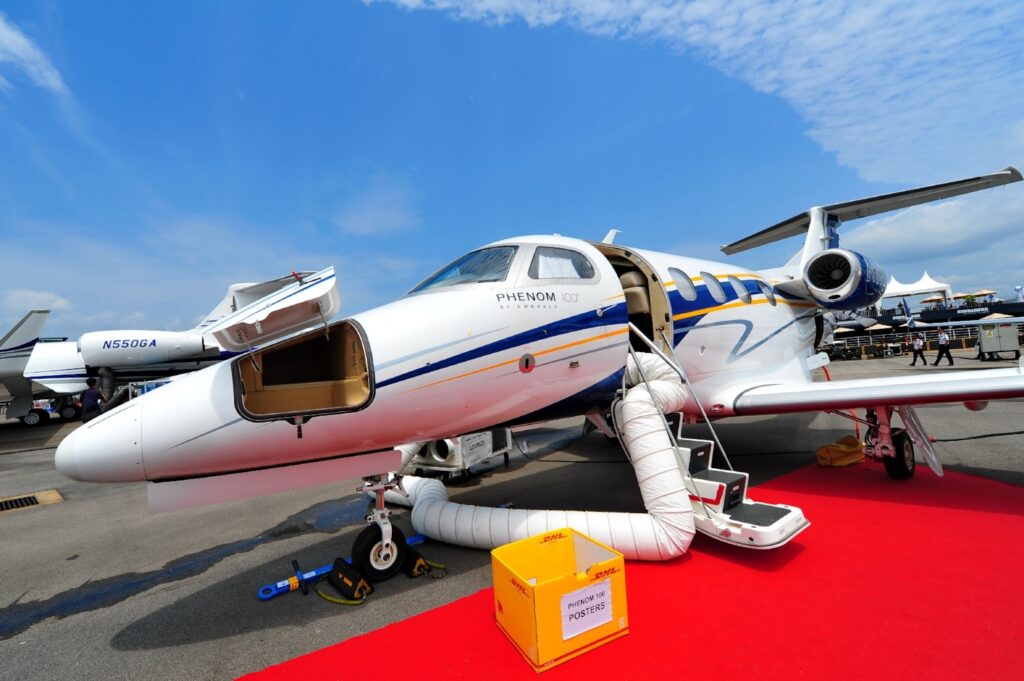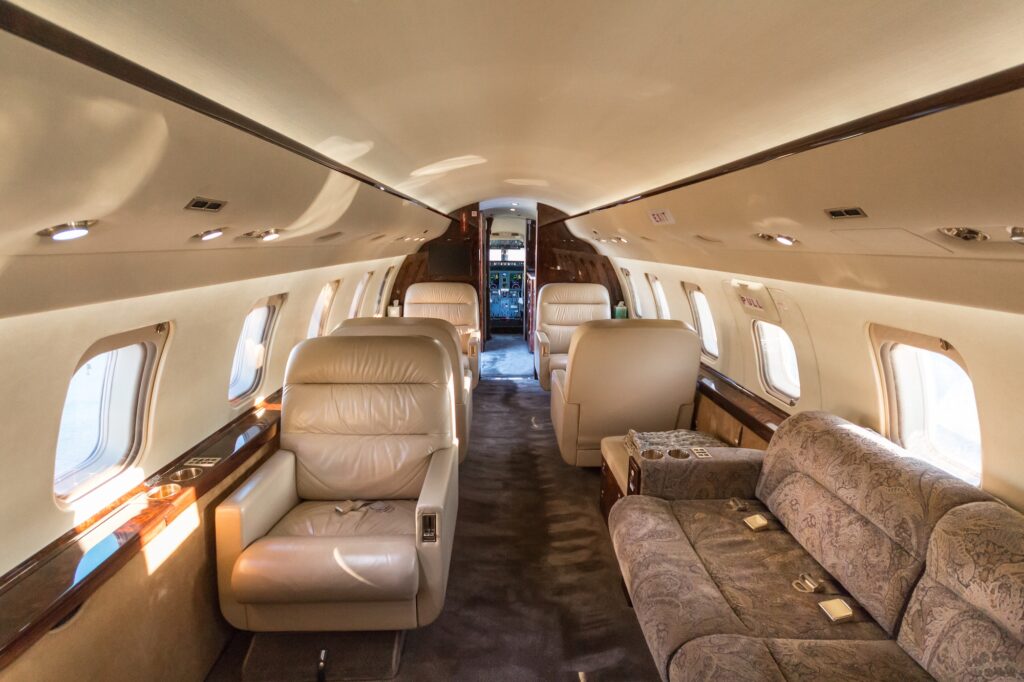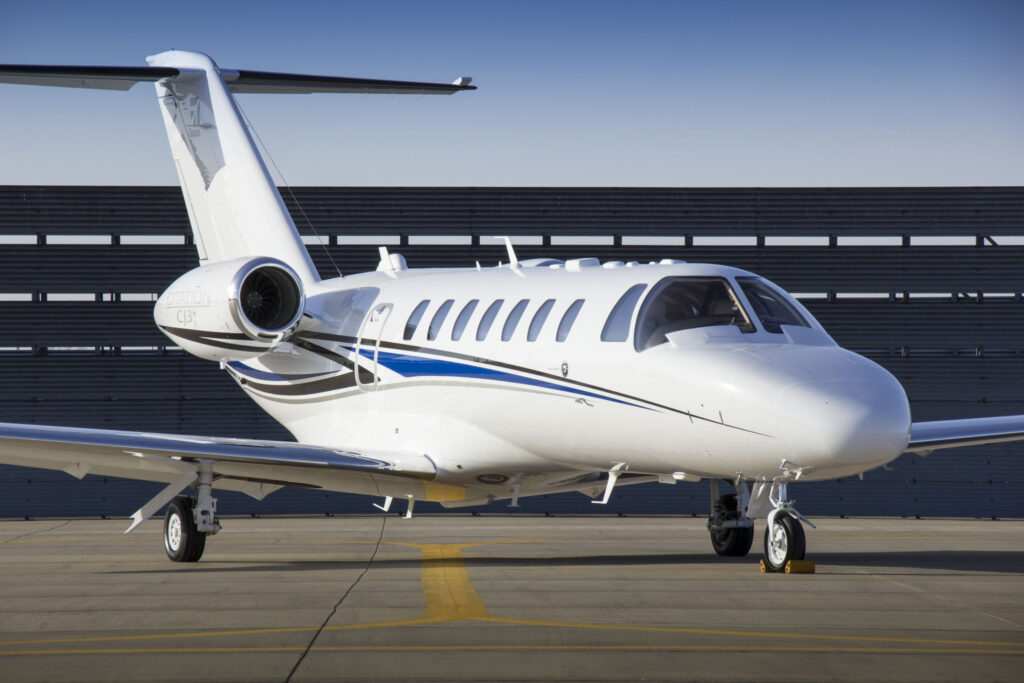Citation Mustang
First delivered in 2006, the Citation Mustang (or Model 510) is one of only a few “very light jets” on the market today, and before the introduction of Cessna’s Citation M2, was considered Cessna’s “entry-level jet.” The Mustang typically seats four with two in the cockpit, but can sit five with a single pilot. In 2017, production of the Mustang was ceased due in large part to the success of the M2, which fills a similar niche but performs significantly better.
The Mustang comes equipped with two Pratt & Whitney Canada PW615F engines. It has a normal cruise speed of 332 knots, a range of 984 nautical miles, a climb rate of 3,010 feet per minute, and requires 3,296 feet of runway to takeoff and 2,813 feet to land.
Citation M2
In 2013, Cessna began delivering the Citation M2. The M2 was intended to be the next step up for those wanting to upgrade from the Mustang, but in actuality was a variation of the original CitationJet, or Model 525. Although they used the 525 serial number, Cessna opted to market the M2 as a completely different aircraft than the CJ, likely in order to capitalize on owner-pilots that were passionate about the Mustang’s unique fit within the Citation family, hoping to have a similar effect with the M2. The M2 was created to fill the gap between the Mustang and the CJ1/CJ1+. Many owner-pilots that were used to flying Cessna’s piston aircraft were leery of stepping up to the much more powerful CJ1. The M2 also comes equipped with Garmin’s G3000 avionics system, a relatively straight-forward progression for pilots used to the G1000 on Cessna’s single-engine planes and the Mustang, as opposed to the Collins ProLine 21 found on the CJ1 and CJ1+.
The M2 is powered by two FJ44-1AP-21 engines. It has a normal cruise speed of 394 knots, more than 60 knots faster than the Mustang. It has a range of 1,183 nautical miles, nearly 200 nautical miles further than the Mustang. It has a climb rate of 3,698 feet per minute, almost 700 feet more than the Mustang. It requires 3,169 feet of runway to takeoff and 2,640 to land, both of which are significantly better than the Mustang, as well. The M2 also seats two more passengers than the Mustang, and has a cabin that’s almost a foot and a half longer, three inches taller and two inches wider. All that considered, the M2 is valued by VREF at a little over $1 million more than a Mustang of the same year at purchase, and it burns 43 more gallons of fuel per hour.
[ulp id=’ksrvpykbSKmvluGu’]

